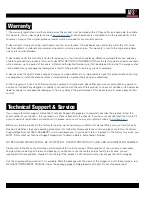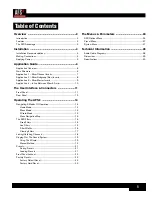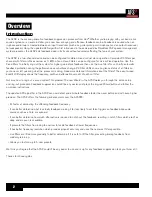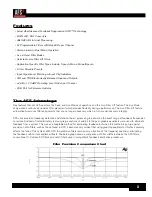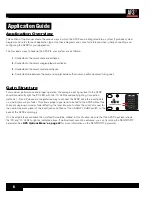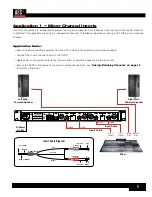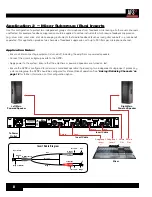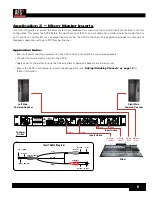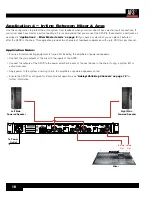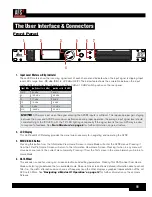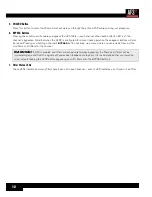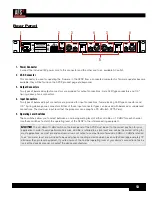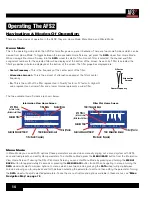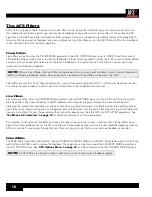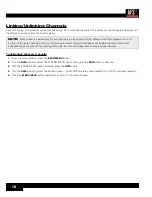
3
Features
• Latest dbx Advanced Feedback Suppression (AFS™) Technology
• 24-Bit A/D, D/A Converters
• 48kHz/24-Bit Internal Processing
• 24 Programmable Filters w/Status LEDs per Channel
• Stereo Linked or Dual Mono Operation
• Live & Fixed Filter Modes
• Selectable Live Filter Lift Times
• Application-Specific Filter Types Include: Speech, Music, Music/Speech
• 5 User Storable Presets
• Input Signal Level Metering w/Input Clip Indicators
• XLR and TRS Electronically Balanced Input and Outputs
• +4 dBu / -10 dBV Operating Level Switch per Channel
• USB Port for Firmware Updates
The AFS Advantage
Key features that set AFS apart are the Fixed and Live Modes of operation and the Live Filter Lift feature. The Live Mode
of operation continuously updates filter placement which provides flexibility during a performance. The Live Filter Lift feature
automatically removes filter assignments that are no longer necessary, which in turn, maximizes sonic integrity.
AFS uses precision frequency detection and state-of-the-art processing to determine the exact range of feedback frequencies
to remove (instead of indiscriminately removing large sections of audio). In the past, graphic equalizers were used to eliminate
feedback from a system. This was an acceptable method for eliminating feedback, but when this method is put up against
precision notch filters, such as those found in AFS, it becomes very evident that using graphic equalizers for this task severely
affects the tone of the system. With AFS, the precision filters remove only a fraction of the frequency spectrum, eliminating
the feedback with far less audible artifacts. The below graph shows a comparison of filter widths between the AFS filters,
conventional 1/3 octave EQ filters, and notch filters used in competitor’s feedback elimination processors.
Filter Precision Comparison Chart
Summary of Contents for AFS2
Page 1: ...Owner s Manual ...
Page 33: ......


